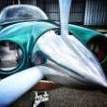231 crash on takeoff at 47N
-
Members Online
- markgrue
- kaba
- Jakes Simmons
- turbofan
- wrr
- Ragsf15e
- Evan
- Ivan
- amillet
- Todd1
- Lumberg
- Graf_Aviator
- EricJ
- 802flyer
- Igor_U
- eman1200
- UteM20F
- Mooney in Oz
- Rotorhead
- T. Peterson
- hubcap
- Wingover
- Sabremech
- 1980Mooney
- Raistlin
- bluehighwayflyer
- M20E for me
- TCC
- Echo
- generalaviationguru
- prillayo03
- KASE
- FlyingScot
- CAV Ice
- Tmack201
- Austin305Rocket
- Paul Thomas
- Jake@BevanAviation
- skykrawler
- Larry
- Andy95W
- richardbrochu27
- Ronnie Pool
- GeeBee
- Parker_Woodruff
- ericrynehess
- mooniacX
- Bpshea50
- Nico1


Recommended Posts
Join the conversation
You can post now and register later. If you have an account, sign in now to post with your account.